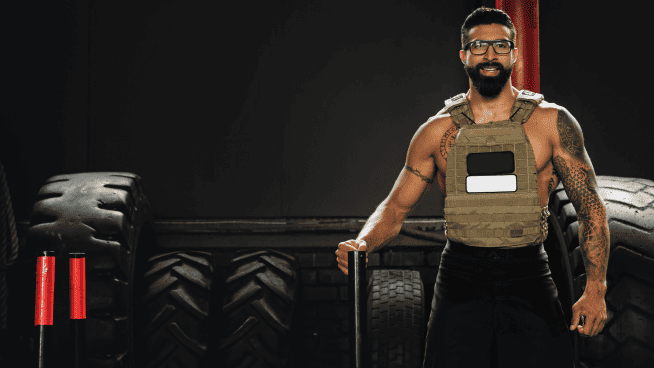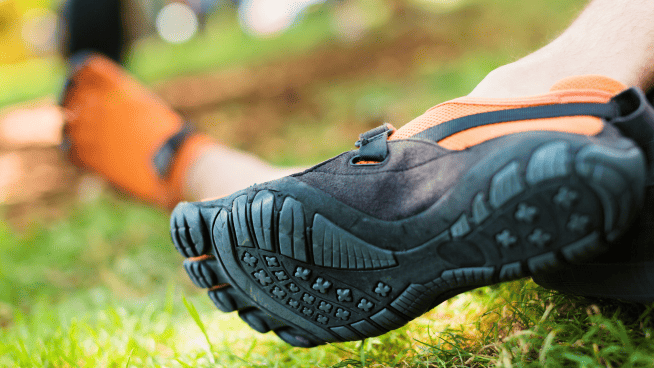Why the Dead Bug Is Changing Core Training
Every once in a while, an exercise catches us by surprise. We see an athlete perform it or a coach recommend it, and suddenly it seems to be everywhere. The latest example is the Dead Bug.
If you’re unfamiliar with it, you’re probably asking yourself, “What the heck is a Dead Bug?” Well, you’re not alone. Many many people have given us strange looks when we talk about this move.
The Dead Bug is an exercise designed to strengthen your core. It gets its funny name because when you perform it, you look like a dead bug lying on its back with its legs in the air. But despite its strange name, the exercise is neither complicated nor crazy. It is commonly used in Pilates workouts, and it has recently skyrocketed in popularity among strength coaches and personal trainers.
Why the sudden spike? The way we train the core has changed in recent years, largely due to the research of Dr. Stuart McGill. Rather than performing exercises like Crunches and Sit-Ups, which require you to flex your trunk, Dr. McGill and other elite experts (like Mike Boyle) advocate training the abdominals to resist extension to protect your lower back.
RELATED: Why You Should Avoid the GHD Sit-Up
Planks and Ab Rollouts are basic anti-extension exercises, and they take up the majority of most modern core workouts. At first glance, the Dead Bug may not seem to fit in the category. But try it without bracing your abs and you’ll quickly feel your lower back rise up off the floor as your opposite leg and arm extend. To prevent your back from arching, you must tighten your abs, which makes the move an anti-extension exercise.
But there’s more to it. Often athletes cannot move their hips without engaging their lower back muscles, or they can’t raise their arms overhead without arching their backs and sticking their ribs out. The Dead Bug fixes these issues by teaching you to isolate movement at the hips and shoulders without moving your spine. Improving this movement pattern is important, because it protects your spine from movements it was not designed to handle.
The Dead Bug is not the only core move you should do. But it’s a great exercise that you should consider adding to your core training routine. You’ll train the way your body was designed to function, and you’ll ultimately become a better and more durable athlete.
Dead Bug How To
- Lie on your back with your arms extended in front of your shoulders.
- Bend your hips and knees to a 90-degree angle.
- Tighten your abs and press your lower back into the floor.
- Take a deep breath in.
- As you exhale, slowly extend your left leg toward the floor and bring your right arm overhead. Keep your abs tight and don’t let your lower back arch.
- Slowly return your arm and leg to the starting position.
- Repeat with your opposite arm and leg. Continue alternating.
Sets/Reps: 3×10
The Dead Bug has many variations. Eric Cressey shows three variations of the basic move here. Also, watch the video above to see NHL star Jordan Eberle perform an advanced variation.
RECOMMENDED FOR YOU
MOST POPULAR
Why the Dead Bug Is Changing Core Training
Every once in a while, an exercise catches us by surprise. We see an athlete perform it or a coach recommend it, and suddenly it seems to be everywhere. The latest example is the Dead Bug.
If you’re unfamiliar with it, you’re probably asking yourself, “What the heck is a Dead Bug?” Well, you’re not alone. Many many people have given us strange looks when we talk about this move.
The Dead Bug is an exercise designed to strengthen your core. It gets its funny name because when you perform it, you look like a dead bug lying on its back with its legs in the air. But despite its strange name, the exercise is neither complicated nor crazy. It is commonly used in Pilates workouts, and it has recently skyrocketed in popularity among strength coaches and personal trainers.
Why the sudden spike? The way we train the core has changed in recent years, largely due to the research of Dr. Stuart McGill. Rather than performing exercises like Crunches and Sit-Ups, which require you to flex your trunk, Dr. McGill and other elite experts (like Mike Boyle) advocate training the abdominals to resist extension to protect your lower back.
RELATED: Why You Should Avoid the GHD Sit-Up
Planks and Ab Rollouts are basic anti-extension exercises, and they take up the majority of most modern core workouts. At first glance, the Dead Bug may not seem to fit in the category. But try it without bracing your abs and you’ll quickly feel your lower back rise up off the floor as your opposite leg and arm extend. To prevent your back from arching, you must tighten your abs, which makes the move an anti-extension exercise.
But there’s more to it. Often athletes cannot move their hips without engaging their lower back muscles, or they can’t raise their arms overhead without arching their backs and sticking their ribs out. The Dead Bug fixes these issues by teaching you to isolate movement at the hips and shoulders without moving your spine. Improving this movement pattern is important, because it protects your spine from movements it was not designed to handle.
The Dead Bug is not the only core move you should do. But it’s a great exercise that you should consider adding to your core training routine. You’ll train the way your body was designed to function, and you’ll ultimately become a better and more durable athlete.
Dead Bug How To
- Lie on your back with your arms extended in front of your shoulders.
- Bend your hips and knees to a 90-degree angle.
- Tighten your abs and press your lower back into the floor.
- Take a deep breath in.
- As you exhale, slowly extend your left leg toward the floor and bring your right arm overhead. Keep your abs tight and don’t let your lower back arch.
- Slowly return your arm and leg to the starting position.
- Repeat with your opposite arm and leg. Continue alternating.
Sets/Reps: 3×10
The Dead Bug has many variations. Eric Cressey shows three variations of the basic move here. Also, watch the video above to see NHL star Jordan Eberle perform an advanced variation.










